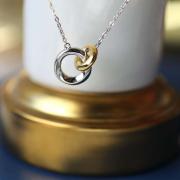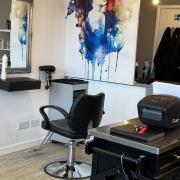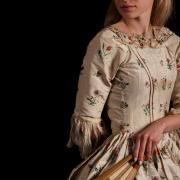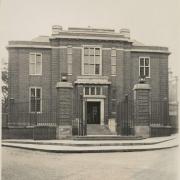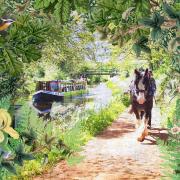It’s very difficult to concentrate while sitting in the office of Andrea Harkin, the managing director at House of Marbles.
A desk, computer, and large table in the centre of the room shows this is indeed a working space for meetings, but the surrounding walls... well, they are lined with shelves, which are filled floor to ceiling with toys and games. Dominoes, tiddlywinks, card games, jokes, pick up sticks, yoyos, skipping ropes, penguin skittles...
This is after all the boss’s room in a company which for 50 years has been making toys, games and puzzles.
And if you are in charge of a toy company, and part of your remit is to come up with new ideas every year, then why wouldn’t you surround yourself with games?
Andrea has recently taken on the mantle of MD. She’s already visiting the company’s various international distribution centres, being introduced in her new role by William Bavin, the outgoing managing director whose association with the company goes way back, almost to the beginning.

House of Marbles is an institution in its home town of Bovey Tracey and it’s in an iconic building, the town’s old pottery. However, the extent of its reach may not be so well known and, sitting over coffee talking to Andrea and William, it becomes clear that this is a truly impressive success story, crossing continents with its products, making bespoke items for high end clients, creating some of the world’s most sought-after glass products and making a huge range of games, from paper planes to a £1,500 luxury solitaire board.
House of Marbles began in a craft workshop in Chudleigh in 1973 with founder Robin Sturdy making wooden items, including games to sell at craft fairs and county shows.
The wooden games were a hit, people drawn to the nostalgia of solitaire boards, noughts and crosses, chequers and nine man’s morris.


In the 1980s the company set up its own marble making glassworks, Teign Valley Glass in Teignmouth. It made sense, as marbles were a key component of its games, but it was a brave move, as William says, ‘No play marbles had been made here since Victorian times.’
Then in 1990 the redundant pottery buildings were discovered. They had been bought by a developer who was beginning to knock them down, but William immediately saw the potential.
William had joined Robin, at the end of 1979 after former business partner Geoffrey Bourne left. He’d been looking for a job having come back to the UK after living and working in Cape Town.
‘I saw the advert and Devon seemed a good place to bring up children,’ he says.
As House of Marbles expanded it spread into other countries. William travelled round the world in a hunt for distributors and now the company has its own centres overseas including in America, Australia and Canada.


What has always made House of Marbles unique is its love of nostalgia – and maintaining quality and high standards. The kind of places that sell its games are heritage venues, museums and garden centres, not supermarkets and big toy shops.
But you never know where you might find House of Marbles. Andrea, who’d grown up around Bovey, remembers seeing its games when she was in one of her early jobs, working at Disney in Florida - she was amazed and delighted to spot the familiar packaging in the resort’s shops.
Andrea, who joined House of Marbles 13 years ago, coming in to work on its online sales, is in the process of bringing a new line of ideas for games, resurrecting ones she remembers from her youth – including a miniature Spiromania, based on the 1970s spirograph game. It’s been a big hit.
When I mention an old card game discovered at home hidden away in a box in an attic, both Andrea and William are intrigued. In a corner of the office there’s a collection of books, many look quite old, and William starts leafing through the volumes, looking for any references to the game called Sevens.


They know that finding new game discoveries or rather, uncovering and redesigning old toys and games is a crucial part of the business. The yearly catalogue of their products always contains new additions.
As William says, House of Marbles is, ‘creating from things that have gone before’.
‘It’s revamping the classics and thinking of them in a different way,’ adds Andrea.
Teign Valley Glass, now also at the Bovey site, continues to make special marbles, used in the more expensive games, but it’s also a thriving glassworks in its own right. House of Marbles also makes bespoke games for clients, including English Heritage, the Orient Express and Christmas grotto presents for high end stores.
These days there are a stable of manufacturers they use around the world. Sourcing from multiple countries is important to the stability of the company, says Andrea.


William adds: ‘One of the reasons we are still here 50 years later is that we are so spread, both in terms of areas of the business and the global distribution – if one area is experiencing economic problems, others will be able to carry the company.’
‘It’s helped us get through 50 years and four recessions,’ he adds.
The classic games, along with marble solitiare boards have stood the test of time, says Andrea, and over the years they have also added pocket money classics and Christmas specific gifts. One of her favourite festive games is Christmas Happy Families which has various Christmas characters with little humorous twists.
As well as rigorous safety testing, all the games are play tested too. On one memorable occasion, Andrea tried out the new whoopie cushion from the Mr Phartwell joke range on unsuspecting members of staff. She put the results on an Instagram reel, but admits, with a smile ‘I did feel quite bad afterwards’.
When asked for her favourite game, she finds it hard to choose. ‘My all-time classic is chess... and pick-up-sticks. I used to play pick-up-sticks on visits to grandparents and I’d play for a bet with liquorice Allsorts or, on special occasions, Quality Street!’
And as for the solitaire boards – the iconic House of Marbles game, ‘they will never leave the range’ she says.
houseofmarbles.com






